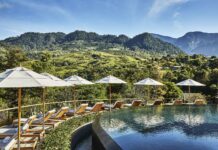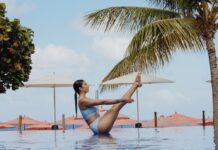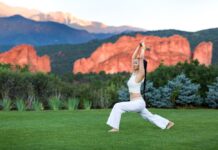by Anne Dimon, The tender packed with Crystal Symphony passengers docks at Phuket’s, Patang Beach about 9 a.m. and temperatures are already in the 90 degree F / 32 degree C zone. Our guide and driver from Trikaya Tours are waiting with an air-conditioned mini van ready to take us to a few of the island’s main attractions.
The young woman who is our guide introducers herself as “Ben.” It’s an English nickname, she says, given to her by her mother because her Thai name, “Nuchjaree” is difficult for visitors to remember and pronounce. So, Ben it is!

The streets, here, are a jumble of colourful shops, restaurants, bars, massage and beauty parlours, artisan stalls and low-rise apartment buildings – some with drying laundry waving from balconies. Cars and motorcycles vie for positioning on busy streets. Motorcycles are almost as common as cars. “Better to navigate traffic, easier to buy and uses less gas,” says Ben.
Kicking off the tour we head along busy streets up into the hills, past rubber tree plantations, some of which, Ben tells us, are being uprooted to make way for palms because palm oil is now more revenue producing than rubber. Up to the aptly-named View Point for a bird’s eye view of this lush and hilly island hemmed, in various spots, with long coral sand beaches. (Photo above)
“There are only two seasons here,” says Ben. “Rain and Hot.” She tells us that December to February is the best time to visit.
Phuket, Thailand is a mountainous island about the size of Singapore and with a population of about 500,000, says Ben, and Patang Beach is the island’s most popular and busiest beach town.
Next stop is the famous Big Budda.
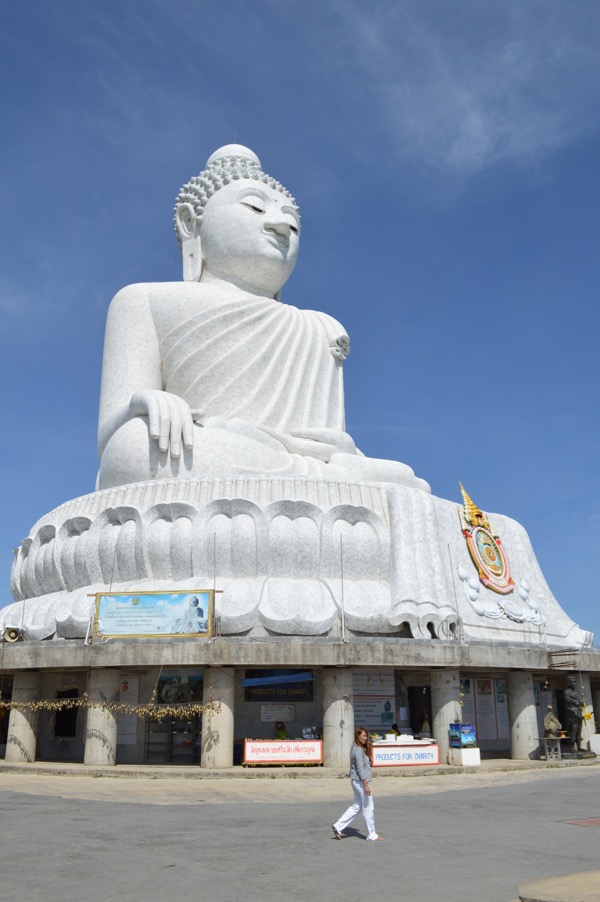 It’s a good walk up concrete steps to one of the island’s main attractions: the Big Buddha – a place of worships for Phuket’s Buddhist monks. Built in 2005 – and still under construction awaiting donations from visitors and the Thai people – the site is considered sacred and, for women, the show of arms or legs is not permitted. Batik wraps are handed out free to women wearing what is considered to be “inappropriate dress” then collected at the end of the visit.
It’s a good walk up concrete steps to one of the island’s main attractions: the Big Buddha – a place of worships for Phuket’s Buddhist monks. Built in 2005 – and still under construction awaiting donations from visitors and the Thai people – the site is considered sacred and, for women, the show of arms or legs is not permitted. Batik wraps are handed out free to women wearing what is considered to be “inappropriate dress” then collected at the end of the visit.
Standing 45 metres (almost 148 feet) tall and made from small blocks of white Burmese marble, the Buddha sets his gaze over Phuket Town and its two harbours. The air rings with the constant tingling of hundreds of small brass bells set in motion by the wind and considered to be announcing good fortune for the locals who visit often each year, especially during holidays.
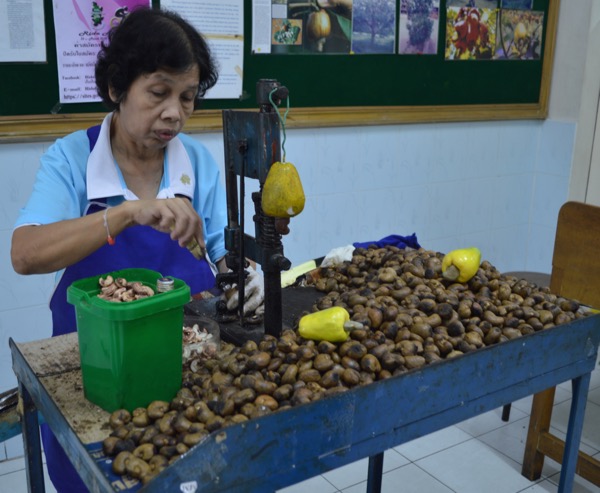
The Cashew Factory is a spot to visit if only to witness the laborious job of opening each cashew nut. Above, a woman uses a tool to help her separate the nut from the pear-shaped cashew fruit, then crack and open the shell without breaking the nut. Each nut is opened individually.
The factory’s shop sells cashews in every variety you could imagine including various flavours and even a cashew juice. The nut is also used liberally in Thai cuisine.
We head to Phuket Town’s Old Town section for a glass of freshly-made, iced coconut water and spring rolls at Lock Tien, a popular local eatery, then a walk around the colourful fruit and vegetable market. Old Town encompasses about half of this city and dates back about half a century, Ben tells us, when it was settled by the Chinese. Next, a Thai cooking class at the famous Blue Elephant.






